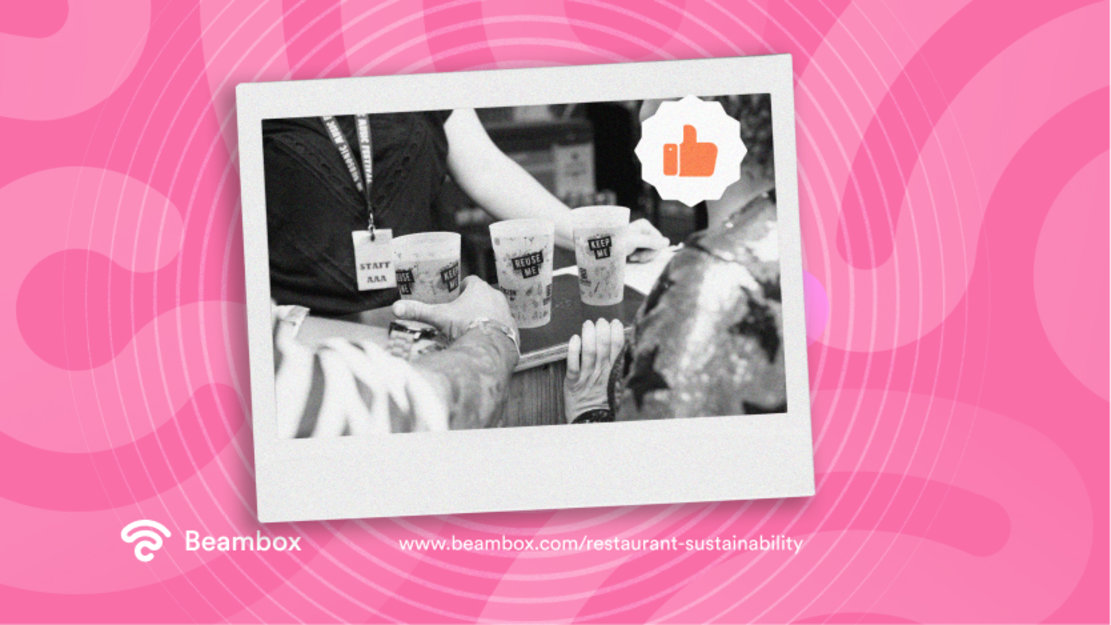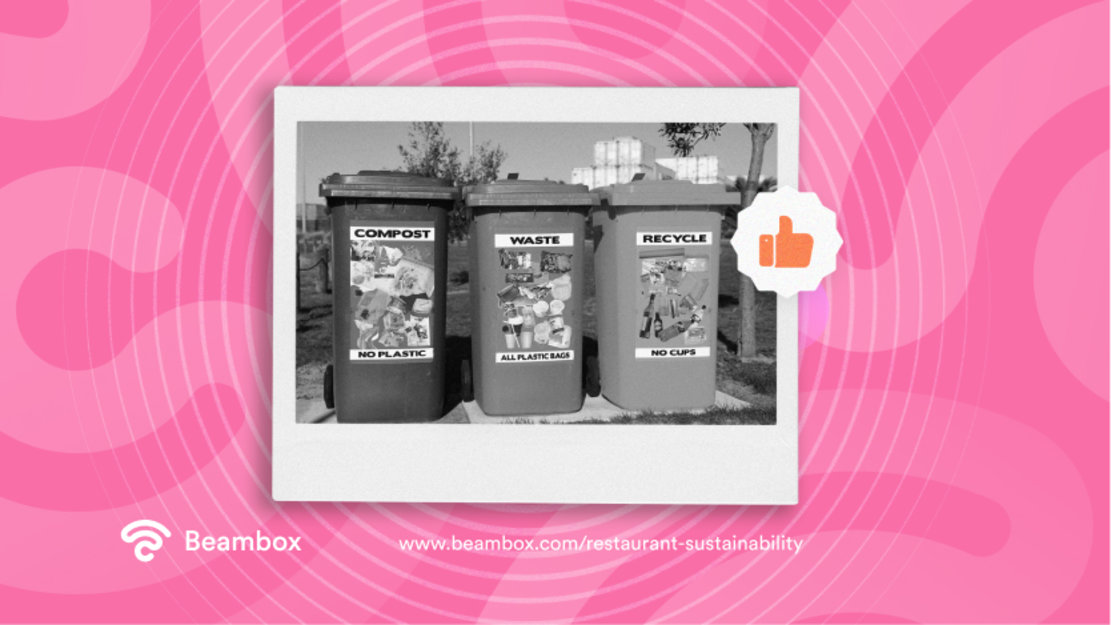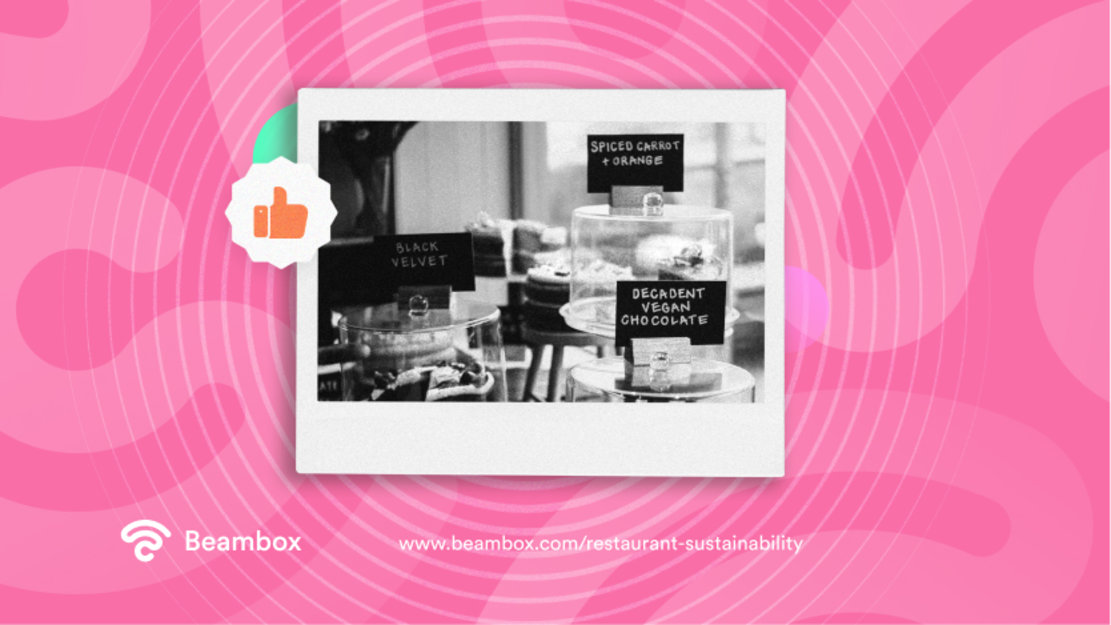Restaurant Sustainability: Trends To Make Your Venue Greener
People say restaurants and sustainability in the same sentence more often than ever. Customers are aware of the impact humans have on the environment and want to make an effort to reduce it. They eat up any chance they have of a greener future. Therefore, ignoring restaurant sustainability isn’t an op tion anymore.
tion anymore.
In fact, many restaurants have started becoming mindful of how they can reduce their carbon footprint. These are the venues that get the most customer attention. If you want to follow in their footsteps, you’ve reached the perfect article to start sustainability practices.
It will start with the definition and ease into the benefits before giving you the tips and trends to follow. If you stick to the end, you’ll also learn how to promote your efforts. So, let’s dive right in!

What Is Restaurant Sustainability?
Restaurant sustainability is about running an eatery that minimizes its environmental impact while supporting the community and being economically responsible. It’s a company culture that doesn’t just focus on the profits. It also considers people and the planet.
Such restaurants contribute to a greener future and also give customers a chance to do so. This can become a massive selling point since people want to contribute to a positive environment.
In fact, 81% of consumers want food options that help the environment, and 41% are willing to pay for them.
This proves sustainable restaurants aren’t just a myth; they drive customer decisions.
Besides, it can promote customer loyalty since your values align with your customers. You make them feel like they’re making a difference, which prompts them to form a personal connection with your restaurant.
Moreover, sustainability includes reducing food waste and energy consumption, improving the menu, and efficiently utilizing available resources. In return, these efforts reduce your costs, allowing you to make more profits.
Plus, eco-friendly efforts like growing vegetables, local sourcing, and supply chain management can improve food quality.
You can create social media posts to attract clients. You’ll see foot traffic growth, with people coming to try your restaurant at least once. If you can impress them, you’ll be able to add more people to your customer base. That will serve as another boost to revenue and profits.
How Can Restaurants Be More Sustainable: 5 Tips To Follow in 2024
Enforcing sustainability practices can make restaurants more sustainable. After learning the definition and benefits, you only need to ask, “How can restaurants be more sustainable?” If you’re ready to start doing that, you’re heading in the right direction.
Of course, simply recycling things is an excellent start to sustainability. But while small changes make a big difference, you need to focus on forming the foundation of a sustainable restaurant. For that, you’ll need some vital sustainable practices. So, here are five tips to help you move towards a greener future.
1. Start With the Basic Restaurant Sustainability Practices
The first step in creating a sustainable restaurant is to start small. From ingredient sourcing to getting the food to the customers, a lot goes into packaging. A small win would be to reduce this packaging or use reusable containers for food delivery and serving.
Moreover, you can invest in better cleaning products since most commercial cleaners contain harmful chemicals. However, such products can be more expensive than standard cleaners, so consider buying them in bulk.
You can also reduce paper wastage by displaying important updates on digital signage or chalkboards. Technology can also play a part here by providing digital receipts to customers.
2. Reduce Food Waste
Reducing food waste plays a huge role in sustainability. Thrown-away food rots and creates methane, which is even more dangerous than carbon dioxide. According to WWF, cutting down on food waste can reduce 6% to 8% of carbon emissions.
Therefore, be mindful of how you create your dishes. Balance the portions so that customers don’t waste the food.
Moreover, keep your stock in check to avoid ordering more raw materials than you need. That will put you in a difficult position with wasted money and expiring food that’s useless to you. Lastly, analyze your menu and ditch any dishes that don’t get a lot of orders.

3. Use Any Waste That Remains
Even though you’ll be making efforts to reduce food wastage, you can’t completely avoid it. There will always be some waste that you have to dispose of. However, you can bring that waste to use if you follow the correct practices.
For example, you can create restaurant compost using organic waste like food scraps. However, you’ll have to use biodegradable materials to create fertilized soil without artificial ingredients. You can even grow your fruits and vegetables using this soil. Or you can sell it off to farmers for extra income.
Additionally, use your creativity to create new dishes using leftover food. Then, donate those to charity organizations or distribute them among people in need. Waste that you can’t turn into something else will make good animal food. Lastly, use proper recycling bins to put things like glass, plastic, and paper to good use.
4. Control Energy and Water Usage
When they hear the word “sustainability,” some people immediately think of controlling water and energy usage. Therefore, it makes sense to include it in this list of restaurant sustainability tips. Here’s how you can put it into action. Start by using less water or recycling it. The simplest way to do this is by turning off taps when you’re not using them. Moreover, the water you use to wash the dishes can go into plants or compost if you have one. Another way to control water consumption is installing smart appliances like motion-controlled taps.
Moving onto energy consumption, remember to switch off all appliances after using them. Again, technology can prove to be useful here.
For example, you can attach timers to lights and electrical appliances. Using LED, CFL, and halogen bulbs also helps.

5. Use Renewable Energy Sources
The last tip on this list is to use renewable energy sources. Nonrenewable resources emit harmful gases in the air. Why risk that when you’re making so many other efforts for restaurant sustainability?
Moreover, renewable energy sources like wind power and solar panels help reduce energy bills significantly. However, their upfront cost might seem high. If you have the budget, consider investing in these sources. Starting with solar panels would be smarter since you can see the results quicker.
3 Restaurant Sustainability Trends That Aren’t Going Away Anytime Soon
Now that you know the tips and best practices, let’s move on to restaurant sustainability trends. Learning from restaurants already making an effort can guide your approach more effectively.
Some trends come and go, while others are here to stay. Your strategy should balance both. This way, you won’t come across as non-trendy but will still be able to focus on long-term goals.
The three trends you’ll explore in the following sections fit this approach perfectly, so let’s start discussing them!

1. Vegan and Vegetarian Options
Animals are a part of our ecosystem. Using them to create foods disrupts the ecological balance and isn’t good for sustainability. Besides, many people show empathy for animals and turn toward veganism to stop killing them. Therefore, veganism is a trend that the restaurant industry uses.
Many businesses add vegan and vegetarian options to their menu design. Following this trend is quite easy since there are plant-based alternatives for almost all of the staples people love. For example, use whipped chickpea water in place of chicken eggs.
Moreover, kids’ menus can be unhealthy, with options like nuggets, sausages, etc. Incorporating plants in these menus attracts parents who want healthy meals for their kids and promotes plant-based diets.
2. Local Ingredient Sourcing
As mentioned earlier, sustainability is also about your social responsibilities. That means supporting local businesses by sourcing ingredients from them. This can become a unique selling point since people forge special connections with local businesses. Supporting such companies gives them satisfaction and makes them feel like a part of the community.
Therefore, restaurants are taking steps to contact vertical farms, urban farms, and allotments for farm-to-table options. This trend also includes growing your vegetables, as discussed in the tips. Besides, local farmers usually give you discounts if you place bulk orders. So, this trend can be quite beneficial to your business.
3. Regenerative Farming
Regenerative farming focuses on improving soil health, benefiting the environment, and promoting long-term sustainability. Therefore, sourcing ingredients for such farms is another trend that restaurants follow.
Chefs prefer these farms because they restore and preserve nature. Customers who hear about this immediately develop a liking for such restaurants.
Another trend that restaurants follow is nose-to-tail cooking. This method aims to use the whole animal without wasting any parts. Not only does this reduce waste, but it’s also healthier since organ meats provide more nutrients. Therefore, these trends are worth considering.
Promote Sustainability in Restaurants To Attract More Guests
Restaurant sustainability is not just a trend; it’s a necessity. By following these tips, you can create a more sustainable restaurant. In return, you’ll reduce your environmental impact, attract new customers, and save money.
However, this won’t be possible without promoting your efforts. Show that recycled materials are recyclable. Display your efforts on signage and create engaging social media posts. Create a compelling story around your sustainability.
Furthermore, if you want to scale your restaurant marketing, check out Beambox. You can automate your marketing campaigns and grow your online reputation. Plus, Beambox has no hidden costs. Start your free trial today!
Get Started With Free WiFi Marketing
Beambox helps businesses like yours grow with data capture, marketing automation and reputation management.
Sign up for 30 days free


